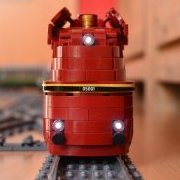
Just another crocodile - SBB Ce 6/8 II "14253" with historical wagons and coaches
By
Ts__, in LEGO Train Tech
-
Recently Browsing 0 members
No registered users viewing this page.

By
Ts__, in LEGO Train Tech
No registered users viewing this page.